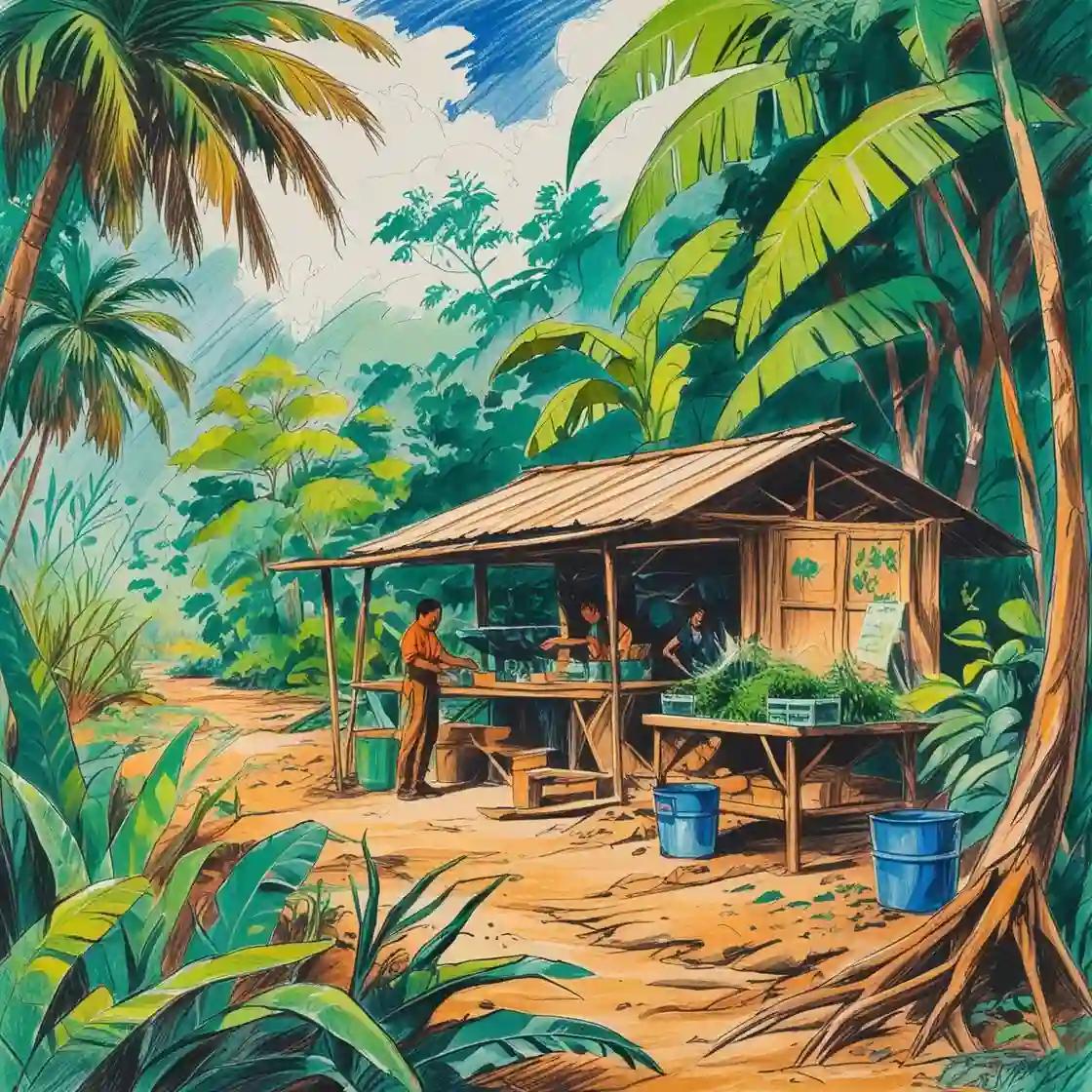How to Start a Sustainable Eco‑Business in the Peruvian Amazon

The Peruvian Amazon is one of the planet’s richest biodiversity hotspots and a powerful place to build a business that protects nature while creating dignified jobs. This guide gives you a complete, practical roadmap — from choosing a model and planning, through permits and construction, to community partnerships, operations, and marketing.
Everything below is formatted for direct publishing in Mozello using content tags only and inline styles.
Why the Amazon is a Strategic Hub for Sustainable Business
Choosing the Right Eco‑Business Model
Community‑Based Ecotourism
Community‑run eco‑lodges, guided wildlife expeditions, canopy walks, river safaris, and cultural experiences. Revenue shares and co‑ownership keep value local and create strong incentives to protect the surrounding forest and wildlife.
- Best where access is reasonable and wildlife viewing is strong.
- Pairs well with birding, photography, wellness, and culinary experiences.
- Works year‑round with adjusted itineraries for wet/dry seasons.
Sustainable Agroforestry
Shade‑grown cacao and coffee, vanilla, medicinal and aromatic plants, and Brazil nuts integrated with native trees. Maintains canopy cover and soil health while producing export‑ready goods.
- Adds stability to tourism businesses with product revenue.
- Organic and fair‑trade certification increases price and trust.
- Great for degraded lands under assisted natural regeneration.
Ethical Forest Products & Crafts
Essential oils, natural cosmetics, woven textiles, jewelry, woodcraft using certified or naturally fallen wood. Sustains cultural heritage and generates steady cash flow without logging intact forest.
Responsible Aquaculture
Native species fish farming (e.g., pacu) and regulated harvest of non‑timber river resources. Improves food security and reduces pressure on wild stocks when well managed.
- Market fit: real demand, clear differentiation, realistic pricing.
- Access & logistics: airports, river ports, seasonal constraints.
- Environmental net‑positive: minimal footprint, measurable gains.
- Community partnership: fair agreements, jobs, training, governance.
Model at a Glance
Step‑by‑Step Roadmap
1) Market Research
Define your core audience (international nature travelers, birders, wellness seekers, domestic explorers). Benchmark nearby offers, price points, seasonality, and access. Validate with ground interviews, regional tourism boards, and small pilot trips.
- Map access: nearest airport/river port, transfer times, wet‑season variation.
- Inventory assets: wildlife hotspots, cultural experiences, scenic features.
- Assess risks: flooding, health services distance, communications.
2) Business Plan with Sustainability Built‑In
Document your value proposition, revenue streams, cost structure, staffing, training, and conservation commitments. Set measurable impact goals (forest area protected, local jobs, training hours, waste reduction, renewable share).
- Revenue: lodging packages, guided tours, add‑ons (craft shop, workshops).
- Costs: land/lease, construction, boats/vehicles, solar, staffing, permits, insurance.
- Funding: impact investors, grants, blended finance, pre‑book campaigns.
3) Legal Setup & Compliance
Incorporate in Peru (e.g., S.R.L. or S.A.C.), appoint a legal representative, obtain tax ID, municipal license, and tourism registrations as required. If operating near protected areas, pursue the right concessions and environmental approvals.
- Land: purchase or long‑term lease; verify titles; align with border/protected‑area rules.
- Permits: tourism activity registration, environmental assessments where applicable.
- Labor: fair contracts, safety training, local hiring prioritized.
4) Community Partnership
Co‑design the venture with community leaders. Agree on benefit‑sharing, employment targets, governance, and conservation rules (no hunting zones, resource limits). Establish a community fund for education, health, and restoration.
- Transparent agreements with assembly approval and periodic reviews.
- Skills training: guiding, hospitality, accounting, languages, first aid.
- Cultural protocol for respectful guest interactions and photography.
5) Eco‑Friendly Design & Construction
Light‑footprint cabins on stilts, passive cooling (high roofs, cross‑ventilation), screened beds, and boardwalks over sensitive ground. Use local renewable materials, low‑impact foundations, and minimal clearing.
- Energy: solar with battery storage; efficient lighting and appliances.
- Water: rain capture, filtration, greywater wetlands or septic done right.
- Waste: source separation, composting, haul‑out for non‑recyclables.
- Wildlife: low‑glare lights, secured food storage, quiet zones.
6) Launch, Operations & Guest Experience
Start with limited inventory to refine logistics and guest flow. Standardize safety briefings, packing lists, contingency plans, and wildlife‑friendly codes of conduct. Gather feedback and iterate quickly.
- Itineraries tuned to seasons; backup activities for heavy rain days.
- Health & safety: first‑aid kits, radio/sat‑coms, evacuation procedures.
- Quality: consistent guiding standards; storytelling that educates and inspires.
7) Marketing & Distribution
Craft a clear brand narrative around conservation and community. Use professional photography, guest testimonials, and transparent impact metrics. Build a multilingual site, maintain active social channels, and partner with niche travel agents.
- Offer 3D/2N and 4D/3N packages with transfers, meals, and activities included.
- Encourage reviews; use email follow‑ups and referral incentives.
- Attend eco‑travel fairs; host familiarization trips for media/agents.
Lean Budget & Timeline Snapshot
Overcoming Common Challenges
- Remote logistics: build supplier relationships, set reorder points, keep buffer stocks, and plan river/road alternatives in wet season.
- Guest comfort vs. low impact: passive cooling, quality nets, hot showers via solar, reliable night lighting with low‑glare design.
- Financial resilience: diversify markets (domestic + international), add off‑season workshops and residencies, maintain a contingency reserve.
- Environmental integrity: wildlife monitoring, no‑take zones, visitor caps on sensitive trails, continuous guide training.
Best‑Practice Checklist
- Written community agreement with profit‑sharing and governance.
- Measurable conservation goals and annual impact reporting.
- Local hiring first; paid training pathways; women and youth inclusion.
- Solar power, water capture/filtration, composting and recycling systems.
- Ethical wildlife viewing guidelines and guest briefings.
- Emergency protocols, first‑aid kits, radio or satellite comms.
- Professional photography, clear packages (3D/2N, 4D/3N), transparent pricing.
Conclusion — Profit with Purpose
Launching a sustainable eco‑business in the Peruvian Amazon blends entrepreneurship with stewardship. Choose a model that fits your landscape and community, design for minimal impact, invest in people, and tell a clear story. Done right, your venture can thrive financially while keeping forests standing and cultures strong.
Explore Related Resources
See available Amazon properties suitable for eco‑lodges, conservation projects, and nature‑based enterprises.
Discover current initiatives focused on conservation, community development, and sustainable infrastructure.
Benefits and opportunities of acquiring rainforest parcels for conservation‑minded development.
An overview of opportunities and bottlenecks across Peru’s diverse agricultural regions.
